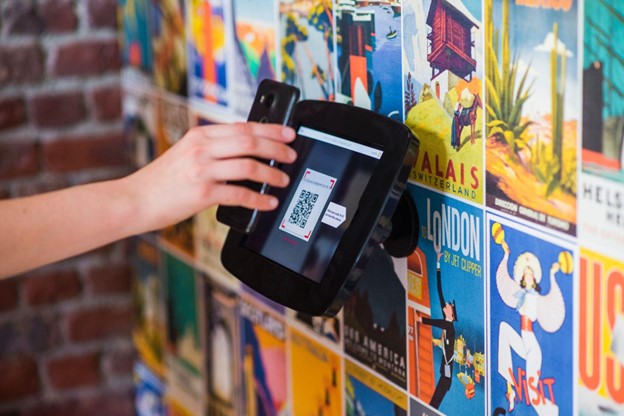As we swiftly surf the wave of the digital era, one domain undergoing significant transformation is business security. The birth and rapid progression of new technologies are ceaselessly redrawing the lines, posing a challenge and an opportunity for businesses worldwide. Let’s investigate some emerging technologies your business will benefit from keeping on its radar.
Artificial intelligence and machine learning
Artificial intelligence (AI) and machine learning (ML) are not just abstract ideas limited to the world of sci-fi anymore. Instead, they are robust technologies impacting a myriad of sectors, including business security. Their potential is breathtaking.
The capabilities of AI and ML stretch beyond human comprehension, significantly augmenting our ability to detect and respond to threats. Traditional security measures have often been reactive, a response following an event. AI and ML flip this on its head, making security proactive rather than reactive.
Think about AI-driven network anomaly detection systems. They function as diligent, tireless watchmen of your network. Using ML algorithms, these systems constantly learn the “normal” behaviour of your network. Spotting deviations, anomalies, or irregularities that hint at potential threats becomes a real-time activity.
Biometric authentication
Biometric authentication is an impressive blend of biology and technology for bolstering security. We’ve all seen or used biometric features like fingerprints or facial recognition on our phones, but the applications go beyond personal gadgets.
Your face, your fingerprints, your iris – these are unique to you, distinguishing you from billions of other humans. Hence, they serve as perfect credentials for identification. Unlike passwords, they’re not susceptible to forgetfulness. Unlike ID cards, they can’t be misplaced or stolen.
According to a report by Grand View Research, the global biometric system market size is expected to reach US$ 150.58 billion by 2030. It’s clear that biometrics is gaining momentum, offering compelling advantages. Here are just three of them:
- Increased security: Biometric traits are unique and cannot be easily replicated.
- Enhanced convenience: No need to remember passwords or carry ID cards.
- Reduced fraud: Makes identity theft or unauthorised access extremely difficult.
As businesses adopt this technology, the security of their assets will substantially strengthen.
Blockchain technology
Let’s dive deeper and explore another intriguing technology: Blockchain. While it’s famously associated with cryptocurrencies such as Bitcoin, it’s also an underappreciated hero in the realm of business security.
Blockchain creates a decentralised, transparent, and immutable ledger system. The decentralised nature means there’s no single point of failure – a significant leap forward in data integrity and secure transactions. IBM notes that blockchain technology can:
- enhance trust and transparency;
- streamline business processes; and
- reduce risk.
The applications of blockchain in business security are immense, and the potential is largely untapped.
Internet of Things (IoT) security
With global interconnectivity increasing, the Internet of Things (IoT) has grown integral to our existence. But, with the ascent in the number of linked devices, the potential for weak spots is also amplified. This is where IoT security steps in.
According to Gartner, the market for enterprise and automotive IoT will reach 55.8 billion endpoints in 2020, up 21 per cent from 2019. That’s billions of devices interacting, potentially exposing us to cyber threats. With robust IoT security measures, we can ensure secure interactions and prevent breaches.
Securing IoT devices and networks is a multi-faceted challenge. Here is what it encompasses:
- Secure access control: Only authorised door access card readers should connect to your physical security and IoT network.
- Data encryption: Data transmitted between IoT devices should be encrypted.
- Regular updates: IoT devices should regularly receive software updates to address potential vulnerabilities.
Advanced surveillance solutions
While we often focus on digital security, we mustn’t overlook the physical aspect. This is where advanced surveillance solutions come into play, such as panoramic security cameras. They offer comprehensive coverage; they miss nothing and see everything.
In addition, access control readers play a crucial role in fortifying physical security. They’re the gatekeepers, deciding who’s allowed entry and who’s not. When combined, these two technologies add an additional safeguard layer, assuring mental ease.
Cybersecurity automation
Ever wished for a magic wand that could take some load off your cybersecurity team? Cybersecurity automation might be the answer. It can streamline processes such as incident response and vulnerability management, making them more efficient and less labour-intensive.
Incorporating automation into your security strategy comes with benefits. Here are just three of them.
- Improved efficiency: Automated processes are faster and more accurate.
- Reduced human error: Automation removes the risk of mistakes that can occur in manual processes.
- Freed resources: It allows your IT team to focus on strategic tasks.
Gartner predicted that by 2025, automation would be implemented in the cybersecurity procedures of 65 per cent of companies, a considerable leap from
Zero trust architecture
“Trust no one” seems like a grim motto, but in the context of zero trust architecture, it’s a mantra for robust security. Operating on the premise that threats can emerge from anywhere (inside or outside the network), it turns the conventional approach to security on its head.
Adopting a Zero Trust approach can substantially enhance your organisation’s security posture. It scrutinises every access request, regardless of its origin, ensuring each one is fully authenticated, authorised, and encrypted.
As per a report by MarketsandMarkets, the Zero Trust Security market size is projected to grow from USD 15.6 billion in 2019 to USD 38.6 billion by 2024. Clearly, Zero Trust isn’t just a buzzword; it is an effective strategy businesses are embracing.
Edge computing
Lastly, we turn to Edge computing, a technology that processes data closer to its source. While it offers benefits such as reduced latency and improved data privacy, it also introduces new implications for data security.
Edge computing decentralises data storage, which reduces the strain on central servers. However, it also necessitates a shift in how we secure data. Edge computing doesn’t just optimise performance; it can also enhance data privacy and improve response times.
Gartner forecasts that by 2025, more than 50 per cent of enterprise-generated data will be created and processed outside the data centre or cloud. This dramatic shift emphasises the importance of edge computing in the modern business landscape.
Final thoughts
Each of these technologies offers unique advantages and potential for bolstering security. They are game-changers worth exploring. If you are looking to enhance your organisation’s security, consider implementing these advancements; they could serve as your gateway to a future that’s safer and more secure.







